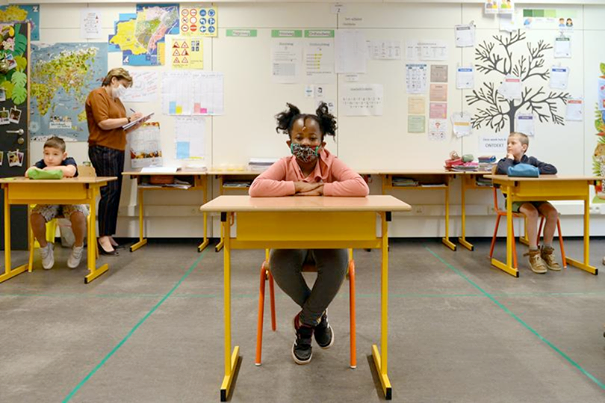School Model
COVID-19 Transmission in Schools
The school model is designed to predict COVID transmission in school populations (students and faculty specifically). It does this by employing a technique called agent based modeling, or ABM. ABM creates a virtual environment where interactions occur between individuals called agents. These agents are marked as infected (has covid), safe, or removed (immune - through previous contraction or vaccination) and operate under probabilistic guidelines. Utilizing ABM, we can simulate a normal school day through the use of parameters input by each specific school.

With this ABM environment set up, each school can submit their current school floor plan and COVID strategies in order to simulate how COVID spread may look at their specific school. The model will serialize their floor plan and convert it into a geospatial file which will interpret what spaces are class rooms, hallways, cafeterias, etc. It will then simulate how the students and faculty will interact in conjunction with input parameters like: mask type, airflow, and desk arrangements. Each one of these factors plays a key role in covid transmission, specifically in these closed environments.
Utilizing the most up-to-date science on COVID transmission, models have been developed which predict spread in the population based on airflow, surface transmission, aerosol transmission, and mask type specifically.